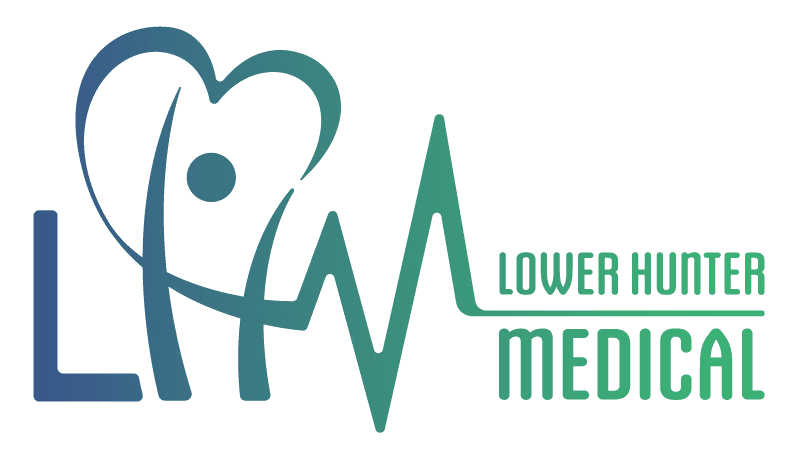Abstract
Patients with autonomic dysfunction may present with a variety of seemingly unrelated symptoms, both generalised and involving specific systems, including fatigue, difficulty concentrating, orthostatic intolerance, palpitations, constipation or diarrhoea, early satiety, urinary retention or incontinence and erectile dysfunction. Failure to connect the diverse symptoms with a single underlying mechanism may lead to incorrect diagnoses, inappropriate interventions and frustration on the part of both doctors and patients. We describe recent developments in the understanding of the pathophysiology of autonomic dysfunction, including the link between the autonomic and immune systems resulting in the ‘inflammatory reflex’. We then provide a rationale to guide the management of patients exhibiting features of autonomic dysfunction, including postural tachycardia syndrome.
Introduction
Patients with autonomic dysfunction may present with a variety of seemingly unrelated symptoms that may be generalised, including fatigue, difficulty concentrating or involving specific systems. These may include various combinations of cardiac (tachycardia/bradycardia), vasomotor- tor (orthostatic intolerance, peripheral blood pooling), sensory (coat-hanger distribution of pain in the upper back, reflecting fatigue in large postural muscles of the neck and shoulders), gastrointestinal (constipation, diarrhoea or nausea/early satiety secondary to gastropar- esis), urogenital (urinary incontinence, frequency, erectile dysfunction), sudomotor (increase or decrease in saliva, tears, sweating – sometimes with heat intolerant- ance) and ophthalmological (impaired accommodation often resulting in intolerance to light and difficulty with vision) symptoms. Failure to connect the diverse symptoms with a single underlying mechanism may lead to incorrect diagnoses and inappropriate interventions.
There is a very active internet-based community of people who identify themselves to be affected by autonomic dysfunction. The aim of this paper is to review some recent developments in the understanding of autonomic dysfunction, which inform the workup and management of patients falling within the continuum of the autonomic dysfunction spectrum.
Causes of autonomic dysfunction: peripheral, ganglionic or central
Degeneration of small peripheral nerve fibres is seen frequently in association with diabetes mellitus. Rarely, peripheral autonomic nerve fibres degenerate due to toxins, a limited peripheral synucleinopathy termed ‘pure autonomic failure (PAF), or are infiltrated by amyloid deposits. Pure autonomic failure and amyloidosis are diagnoses entertained in patients with significant and progressive deficits.
Importantly many commonly prescribed pharmaceuticals for the management of otherwise seemingly unrelated diseases, including depression, hypertension, heart failure, asthma/airways disease, overactive bladder/bladder outlet obstruction, Alzheimer-type dementia and glaucoma, mediate their effect by moderating the peripheral autonomic nervous system and therefore may contribute to, or mask, autonomic dysfunction.
Patients with autoantibodies directed against adrenal-logic, muscarinic or nicotinic receptors may also present with autonomic dysfunction. Assays for the ganglionic receptor (alpha-7 nicotinic acetylcholine receptor), seen in autoimmune autonomic ganglionopathy, are not readily available in Australia. However, as ‘seronegative’ patients may also respond to immunotherapy,1 the decision to pursue immunomodulatory options (intravenous immunoglobulin, plasmapheresis or pharmacological approaches) has been made in some centres based on the predominance of ‘anti-cholinergic’ symptoms, that is dry mouth and eyes, or severe gastroparesis.
Hypotension frequently develops following traumatic interruption of autonomic pathways in the spinal cord or paravertebral sympathetic chain.
Spinal cord injuries above the level of T6 are commonly associated with autonomic dysreflexia. Malignant hypertension can develop suddenly in association with an unrecognised stimulus (e.g. blocked urinary catheter, faecal impaction or pressure sores). Recognition and management of the precipitating stimulus are paramount in the management of autonomic dysreflexia. Anti-hypertensives are usually required only short term if at all.
Central autonomic failure can occur in association with neurodegenerative conditions, such as Parkinson’s disease or multiple system atrophy. Although these patients may describe anhydrosis, a transcutaneous stim- ulus may stimulate sweating in patients with central autonomic dysfunction as peripheral nerves can still be intact.
Currently, the majority of patients referred to auto-nomic clinics have symptoms of postural tachycardia syndrome (POTS), with or without chronic fatigue syndrome (CFS).
Postural tachycardia syndrome
POTS is diagnosed if heart rate (HR) increases by >30 beats per minute (40 beats per minute in adolescents) within 10 min of patients moving from a supine to an erect posture. The increased HR is usually a physiological response to a reduced venous return, accompanied by pooling of blood in the peripheries or splanchnic vasculature. Symptoms usually reflect reduction in capacity to autoregulate cerebral blood flow (lightheadedness, ‘brain fog’) and the metabolic sequelae of persistent tachycardia- dia (fatigue).
At rest, baroreceptors generate action potentials in the afferent limb of the baroreflex arc. The frequency of action potential firing reflects the tension in the walls of the thoracic vessels, adjusting with minute changes to intrathoracic pressure (breathing or Valsalva manoeuvre) or hydrostatic pressure (posture, blood volume). These action potentials travel through the afferent limb of the vagal nerve, communicating in the medulla with both the parasympathetic ‘efferent’ arm of the baroreflex (also travelling through the vagal nerve) and the sympathetic centres. When the baroreflex functions appropriately, standing generates a fall in baroreceptor firing with an immediate increase in HR through both inhibition of vagal tone and increase in sympathetic outflow. Simultaneous upregulation of sympathetic outflow from the medullary baroreflex connections increases vascular tone mediated through the action of noradrenaline on alpha-1 adrenergic receptors in the blood vessels’ smooth muscle cell membranes.
In patients with POTS, the baroreflex-generated sym- pathetic outflow fails to compensate adequately for the fall in venous return that occurs on standing. This may be due to inadequate alpha-1 receptor activation or due to the presence of a strong vasodilating stimulus (e.g. calcitonin gene-related peptide, neuropeptide Y, substance P, prostaglandins and/or nitric oxide) generated in response to acetylcholine. The latter may be particularly relevant in patients who develop POTS following an infective episode as it is now well-recognised that acetylcholine is produced by a subset of T cells expressing choline acetyltransferase following an inflam- matory stimulus.2 Thus, the primary cause for the failure to maintain homeostasis may have multiple different primary drivers.
Attempting to identify the primary driver can be a frustrating exercise. There is an indisputable association of POTS with hereditary hypermobility (including some forms of Ehlers–Danlos syndrome), raising the question of a matrix or connective tissue defect, but it is rarely possible to identify a relevant genetic mutation. Many patients develop POTS after an acute illness in their adolescent years, in association with the appearance of antibodies to Epstein–Barr or influenza viruses. Unfortu- nately, anti-infective and/or immunological therapies are usually ineffective. Although management of the cardiovascular symptoms does not necessarily address the underlying precipitant, it can substantially improve the quality of life for patients with POTS.
Link between the autonomic and immune systems
Between 2000 and 2003, several landmark papers described the ‘inflammatory reflex’ and ‘cholinergic anti- inflammatory pathway’.3–5 The reflex is initiated when inflammatory molecules such as IL-1b and prostaglandins are released by immune cells (tissue dendritic cells) in response to infection (pathogen-associated molecular patterns) or inflammation (damage-associated molecular patterns). IL-1b and prostaglandin receptors on afferent vagal fibres are activated, generating a signal that passes through the vagal afferent fibres to the nucleus tractus solitarius of the medulla. Connections within the brain- stem results in the downregulation of sympathetic outflow, activation of the hypothalamic-pituitary axis (febrile response and increase in glucocorticoids) and activation of the vagal dorsal motor nucleus in the medulla. From the medulla, the efferent arm of the reflex passes through efferent vagal fibres to nerve fibres in the myenteric plexus, macrophages in the gut wall and through the celiac ganglion and splenic nerve (sympathetic) connects with T cells within the spleen. The net result of the efferent arm of the reflex is the downregulation of the inflammatory response. Vagotomy, splenectomy or beta-blockade significantly reduce this anti-inflammatory effect.6
Thus, control of sympathetic and parasympathetic out- flow is dependent not just on baroreceptor activation but also on inflammatory stimuli, including infection, trauma or autoantibodies. Altering vagal tone and/or manipulating acetylcholine signalling pharmacologically can capitalise on this interaction between the immune and autonomic systems.
Intervening in the inflammatory reflex Electrical stimulation of the vagal nerve
Vagal nerve stimulation (VNS) has been shown to reduce inflammation in animal models of endotoxaemia,7 hae- haemorrhagic shock,8 burn-induced injury,9 colitis10 and postoperative ileus. In animal models, the anti-inflammatory effect can be lost if pharmacological or genetic ‘knock-out’ of nicotinic receptors is performed or a splenectomy or vagotomy precedes the inflammatory stimulus.11
Implantable VNS devices have been tried in patients with heart failure,12–14 with beneficial effects independent of the effect of VNS on HR. A phase-2 trial of implantable devices providing VNS for patients with rheumatoid arthritis is in progress and a phase-1 trial of an implanted VNS device for fibromyalgia showed remarkable responses in a small number of patients.15
Less invasive and less costly approaches to VNS include stimulation of the auricular branch of the vagus nerve16 or transcutaneous stimulation of the cervical vagal trunk. Experiments in animals showed that trans-cutaneous stimulation was protective in animal models of endotoxaemia and sepsis.7 Non-invasive VNS is already used in the management of intractable seizures, cervical dystonia, migraines and mental health disorders and is likely to become increasingly adopted in inflam- mandatory conditions.17
Reducing inflammation in the gut (microbiome and food intolerances)
It is likely that in the future a personalised recommendation for dietary modification may be possible through the study of an individual’s glycaemic and microbiome responses to specific foods; however, at present, there is no universally accepted approach. Most patients with POTS and/or CFS go through a phase of exclusion diets and pro-biotics with variable success. In some centres, recommendations include use of histamine-receptor antagonists (both H1 and H2) and/or the use of a diamine oxidase supplement with foods. In the absence of better evidence, we promote a limited trial of dietary and faecal microbiome manipulations while encouraging patients to revert to a healthy balanced diet if the trial fails to improve symptoms.
Suppression of chronic infections
As the inflammatory reflex can be activated by pathogens, reports of individuals in whom chronic infections are ultimately identified as the stimulus for POTS are to be expected. Local epidemiology should be taken into account in selecting relevant investigations for occult infections. It may be worthwhile prescribing antivirals at suppression doses for patients experiencing frequent recurrences of herpes simplex virus.
Acetylcholinesterase inhibitors
Neostigmine and pyridostigmine inhibit acetylcholines- terase enzymes resulting in an increase in acetylcholine at both autonomic and neuromuscular junctions. Neo- stigmine is often used to reverse neuromuscular blockade at the conclusion of anaesthetics whilst pyridostigmine is primarily used to counter autoantibody- dies blocking neuromuscular receptors in patients with myasthenia gravis. The increase in acetylcholine at mus- carinic receptors limits the tolerability of anticholinesterase- ase inhibitors. In the anaesthetic setting, atropine is usually administered concurrently with neostigmine to counter these effects. In patients with autonomic dys- function, the effect of pyridostigmine is unpredictable, with variable activation of the somatic, parasympathetic, sympathetic, immunologic and central nervous systems. Pyridostigmine may be helpful in the management of gastroparesis and orthostatic hypotension, because it appears to improve orthostatic symptoms without increasing supine hypertension, potentially by increasing sympathetic ganglionic transmission. However, stimulation of muscarinic receptors on vascular endothelial cells can increase nitric oxide synthase levels and because nitric oxide is a potent vasodilator, the effect of pyridostigmine can either alleviate or exacerbate ortho-static symptoms.
Domperidone has also been used for patients with gastroparesis. Despite being a dopamine antagonist, it does not readily cross the blood-brain barrier and therefore may not alter transmission in the dopaminergic neurons of the basal ganglia in patients with Parkinson’s disease.
Management of orthostatic intolerance
Non-pharmaceutical interventions for orthostatic symptoms include the use of simple manoeuvres such as crossing the legs while standing/tonic muscle contraction, use of pressure stockings to counteract vascular pooling and avoiding environmental conditions that predispose to vasodilation (e.g. hot showers). For some patients find elevation of the head of the bed by approximately 10 cm is helpful, whilst for others, smaller, more frequent meals and maintenance of blood volume with approximately 2.5 L water and approximately 8 g salt each day may moderate symptoms.
Expansion of blood volume through the use of fludrocorti- sone (or occasionally vasopressin) and increasing vascular tone through the use of alpha agonists (phenylephrine, midodrine) may be life-changing in patients with severe orthostatic intolerance.
Patients with POTS sometimes improve with HR control, using small doses of propranolol or ivabradine off-license.
Droxidopa (L-DOPS) may also have a role to play, although it is not currently registered by the Therapeutic Goods Administration (TGA) and needs to be imported with TGA permission. L-DOPS is a pro-drug, converted to noradrenaline by aromatic amino-acid decarboxylase. Deficiency in dopamine beta-hydroxylase (the enzyme that normally converts dopamine to noradrenaline) is exceedingly uncommon, yet L-DOPS has proved effective in neurally mediated hypotension at doses ranging from 100 to 600 mg three times a day.18–20 As outlined earlier, pyridostigmine may improve or exacerbate orthostatic symptoms and whilst we have not found it to be particularly helpful in the management of orthostatic intolerance in our patients, there are other centres where it is used relatively often.
Management of supine hypertension
Patients with autonomic dysfunction may become hypertensive when supine due to dysfunction of the bar- oreflex. It is important to differentiate supine hyperten- sion from sympathetic dysreflexia in which a block to the descending inhibitory signals fails to moderate the vasoconstriction generated when sympathetic nerves are activated by a noxious stimulus (e.g. urinary retention, bowel distension, sacral pressure sores). This scenario is commonly seen in patients with a spinal cord injury. With sympathetic dysreflexia, the raised blood pressure can be acutely lowered using nitrates, but addressing the primary cause (e.g. by unblocking a urinary catheter) is essential if control of BP is to be regained.
In contrast, supine hypertension is managed by pro- viding a 10O head-up bed tilt and, in patients who still have some sympathetic tone, a central alpha-2 agonist (clonidine) reduces sympathetic outflow overnight when given in the late afternoon without exacerbating ortho-static hypotension during the day.
Management of hyperhidrosis
Surgical interruption of the sympathetic chain at the level of T1–T3 is still performed in some centres, but is irreversible and associated with significant adverse effects. Although sweat glands are innervated by post-ganglionic sympathetic fibres, uniquely to the sympathetic system, these fibres use acetylcholine as their neurotransmitter acting on muscarinic receptors. Effective pharmacological approach to hyperhidrosis, therefore, can entail a reduction of central sympathetic outflow (clonidine) as well as anti-cholinergic approaches (botulinum toxin, glycopyr- rolate). The use of botulinum toxin is usually impractical due to the extent of the area, the need to repeat the treatment several times a year and the high cost. A compounded lotion of glycopyrrolate (1–6%) applied to the affected area has been used in our patients with good effect, although a formal randomised controlled trial has not been undertaken. Being a large, highly charged mol- ecule, systemic absorption after administration on the skin is minimal and therefore the anti-cholinergic side-effects seen with oral administration (i.e. drowsiness, reduced saliva and tear production, urinary retention, constipation and tachycardia) tend not to be an issue.
Management of the neurogenic/overactive bladder
Pharmacological management
Bladder contraction is mediated through para-sympathetic (cholinergic) neurons. Thus, the first approach to patients with urinary frequency is often a trial of an anti-cholinergic medication. Darifenacin/solifenacin possibly cross the blood-brain barrier less readily than do oxybuty- nin, but with all medications in this class, the potential for deterioration in cognitive performance in a susceptible population is concerning. In addition, constipation may be exacerbated (solifenacin > oxybutynin/tolterodine), and QT prolongation may occur (solifenacin at higher doses). Acetylcholinesterase inhibitors prescribed for cognitive impairment may exacerbate urinary frequency.
Local blockade of acetylcholine release through direct injection of botulinum toxin into the muscles of the bladder wall at cystoscopy can be extremely effective for approximately 9 months post-injection. Intermittent or indwelling urinary catheterisation may be required for a variable time after the procedure.
Active relaxation of muscles in the bladder wall is mediated through beta-3 (noradrenergic) receptors. Mir- abegron, a beta-3 agonist, may therefore be helpful on its own or in combination with anti-cholinergics in the management of urinary frequency.
Alpha agonists (e.g. midodrine, phenylephrine) and alpha antagonists (e.g. prazosin) may relieve or precipi- tate urinary incontinence respectively (and vice versa for retention) through their action on receptors in the blad- der outlet. However, when these medications are used for urological symptoms, predictable consequences of stimulating/blocking vascular alpha receptors (hyper-/ hypotension) must be borne in mind.
By reducing the volume of urine produced overnight, small doses of vasopressin (anti-diuretic hormone) may play a role in the treatment of nocturia.
Non-pharmacological management of overactive bladder/nocturia
Adopting the supine position at night, thereby reducing hydrostatic pressures in the legs results in reabsorb- tion of fluid from peripheral tissues into the bloodstream. The ensuing expansion of intravascular volume increases urine production (through both anti-diuretic hormone inhibition and increased glomerular filtration rate), exacerbating nocturia. Use of pressure stockings during the day, raising the head of the bed by approximately 10 cm and leg elevation in the hours prior to retiring to bed can help moderate the volume of urine production overnight.
Over-riding neural messages through the use of sacral nerve stimulators may be very effective in some patients, but they are expensive and placement may be difficult for anatomical reasons. Weekly, 30-minute sessions of posterior tibial nerve stimulation through a needle inserted adjacent to the posterior tibial nerve (near the ankle joint) is a less invasive and cheaper alternative that may benefit some patients. Long-term benefits are often maintained with less frequent (monthly) sessions after the first 6 weeks of more intensive treatment.
Autonomic dysfunction: ‘the new black’
Many patients with chronic disease, particularly neurological conditions and diabetes, will develop autonomic dysfunction.
The point at which autonomic function testing is warranted will depend on whether the demonstration of auto-nomic dysfunction will alter the patient’s management.
Many patients with CFS will have a degree of autonomic dysfunction, reflecting a chronic inflammatory state. There is a thriving online environment providing information to such patients because of which auto-nomic dysfunction has become better known within this community of people than it is within the mainstream of the medical profession, often leading to miscommunication and frustration on both sides.
In patients with significant postural vascular pooling leading to orthostatic intolerance, pharmacological management may dramatically improve symptoms, but will not address the underlying precipitant, for example, the presence of autoantibodies, gut dysbiosis, allergen/food intolerance or mitochondrial/cell signalling dysfunction secondary to nutritional deficiencies. Attempts to manipulate the multiple factors impacting the immune and autonomic systems in these patients remain a great challenge for both patients and their doctors.






